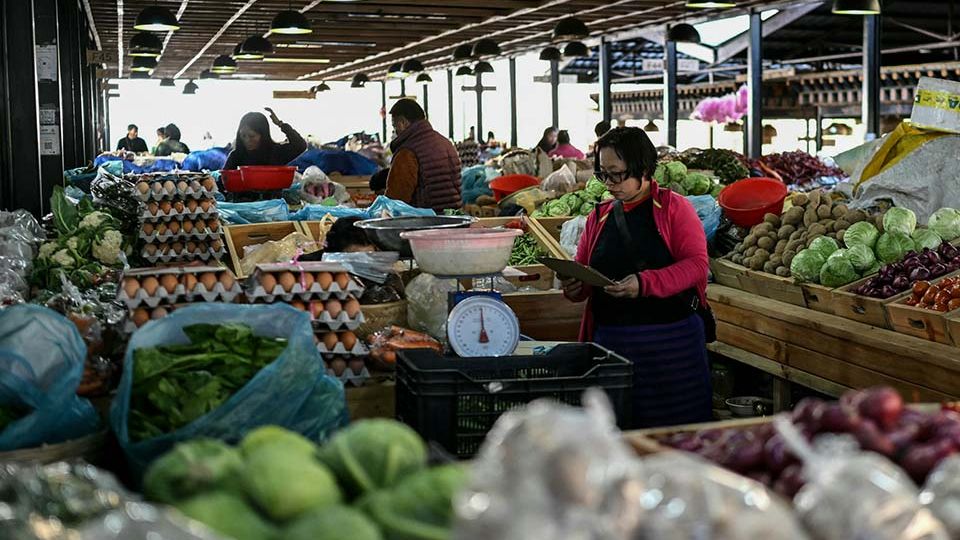April 8, 2025
THIMPHU – A recent study by the Competition and Consumer Affairs Authority (CCAA) found that the Bhutan Meat Vendors Association (BMVA), formed to stabilise prices and ensure supply, may in fact be distorting the market in Thimphu.
Titled “The Impact of Current Practice of Meat Fixing on Consumers in Thimphu”, the study surveyed 53 of the capital city’s 105 registered meat vendors.
The findings reveal a concerning picture of centralised pricing power amid soaring meat imports, rising consumer costs, and stagnant local production.
According to the Bhutan Living Standard Survey (2022), households allocate an average of 10.4 percent of their total food expenditure to meat.
In recent years, the import of livestock commodities has significantly increased. In 2023, Bhutan imported Nu 3.69 billion worth of livestock products, compared to exports worth only Nu 42.9 million.
Initially, the meat prices in Thimphu were regulated by the Meat Price Fixing Committee, but the practice was discontinued when the government liberalised the meat industry.
A meat price committee was established in Thimphu in collaboration with the Local Government administration and the Department of Trade to regulate meat prices. However, as the market was liberalised, the committee was dissolved and price regulation was discontinued.
In the absence of regulatory oversight, the BMVA stepped in to set maximum price limits for various meats, including fish. Though BMVA membership is voluntary, over 91 percent of Thimphu’s meat vendors are members, making the association’s pricing guidelines de facto market rules.
The BMVA was established in 2020 with support from the Bhutan Chamber of Commerce and Industry (BCCI) to manage price fluctuations, ensure affordability, and improve accessibility.
Meat vendors in Thimphu, Kuensel talked to said that the Association sets maximum price limits and imposes penalties on violators, including recommendations to the government for potential license revocation.
While membership is voluntary, the report states, approximately 12 percent of BMVA members feel the pricing policies are too rigid and lack flexibility to respond to market conditions. Furthermore, 38 percent of vendors suggest that some government intervention is necessary, particularly for controlling prices at the source to ensure affordability.
The study notes a lack of reliable historical data to compare prices between BMVA members and non-members, making it difficult to assess the full impact on consumers over time.
Price markups vary, depending on individual vendor strategies, operational costs, and target profit margins.
The limited availability of locally produced beef, combined with export restrictions from India, has exacerbated price volatility. While imports are technically allowed, Bhutan faces ongoing challenges sourcing quality meat that meets food safety standards. Logistical constraints remain a persistent barrier.
The only licensed slaughterhouse in Tsirang is reportedly unable to meet growing demand, further straining supply and price stability.
The CCAA report recommends that the government discourage BMVA’s continued role in price setting. “Though the BMVA’s role in logistics and coordination can be helpful, unregulated pricing practices have the potential to disrupt market dynamics and consumer welfare. Instead, vendors should be allowed to determine prices based on market conditions, fostering competition,” states the study.
The study also recommends capacity-building programmes for vendors to enable them to determine fair and realistic pricing, ensuring better competition in the market.
“Fostering a competitive market environment will help drive improvements in product quality, innovation, and better consumer options,” the report states. “The government should encourage vendors to focus on expanding product ranges and improving operational efficiencies, which could lead to lower prices and higher-quality offerings.”
Bhutan imports huge quantities of meat ever year, particularly chicken, pork, and fish, which contributes to the country’s yawning trade deficit, depleting the country’s limited foreign currency reserve.
Over the next five years, the MoAL aims to increase chicken production from 20 percent to 50 percent, increasing production from 1,165 metric tonnes (MT) to 2,000 MT.
Three large broiler farms will be established in Tsirang, Samdrupjongkhar, and Samtse, each housing 10,000 birds and producing 260 MT of chicken annually.
Processing plants in Samtse and Dagana will ensure efficient processing and distribution, supported by the Price Guarantee Scheme under the Economic Stimulus Plan (ESP).
The government aims to boost pork domestic production from 30 percent to 60 percent, increasing annual production to 1,845 MT from 1,590 MT.
The ministry plans to produce 1,228 breeding pigs annually for private contract breeders. In addition, large-scale fattening farms will be set up in Dagana, Sarpang, Samtse, and Samdrupjongkhar. Currently, there are over 400 private contract pig breeders.
State-owned enterprises (SOEs) under the ESP will establish piggery cold chains and revitalise fish ponds, with the target to produce and supply 151.5 MT of pork, 112 MT of chicken, and 29.8 MT of fish.


